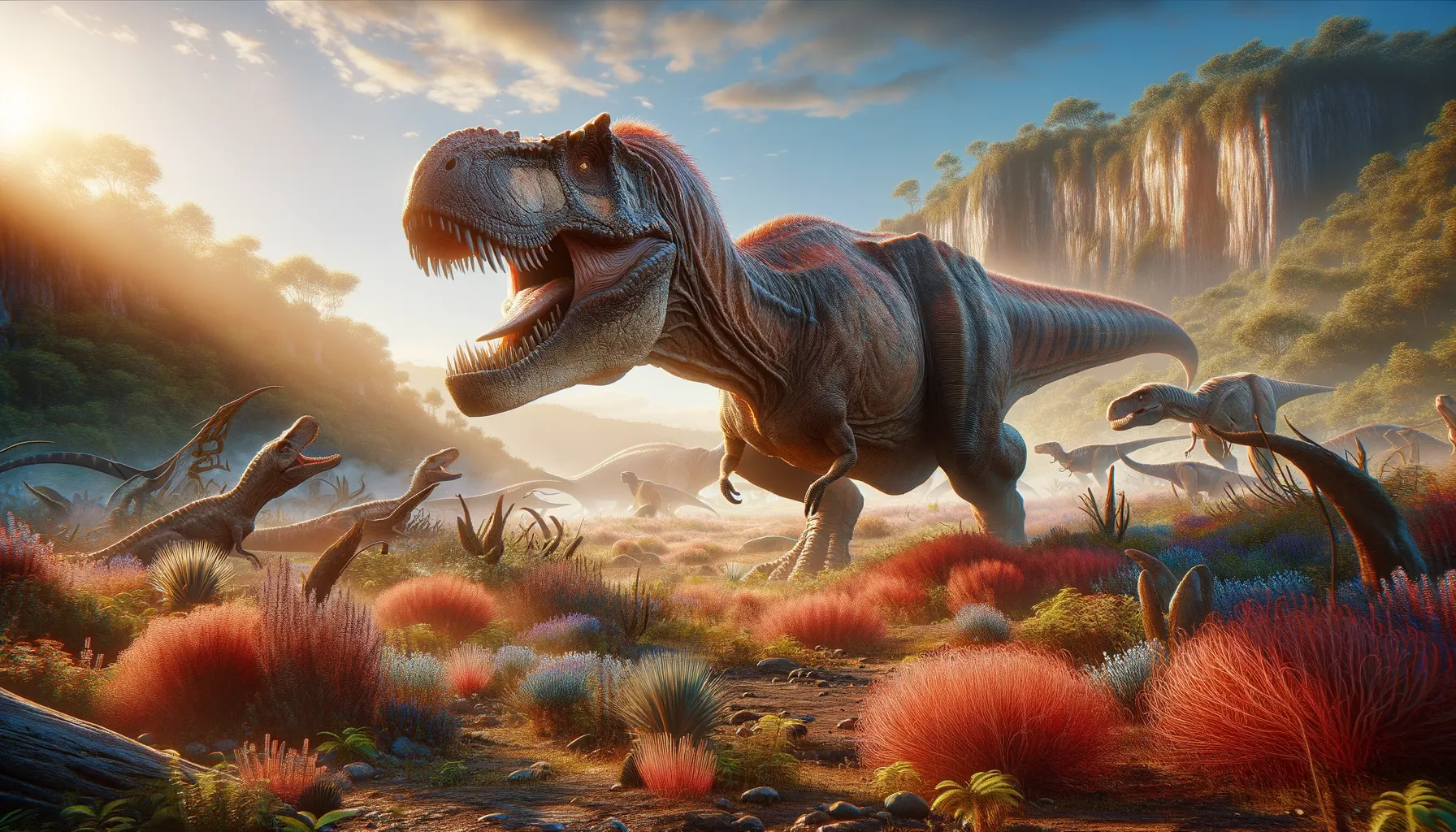
Khetranisaurus
The Enigmatic Giant of Cretaceous Pakistan
Period
Cretaceous
Length
Believed to be over 20 meters long.
Height
Specific height unknown, but large in stature.
Weight
Estimated to be around several tons.
Khetranisaurus was a massive carnivorous dinosaur that roamed what is now Pakistan during the Cretaceous period. Known from limited fossil evidence, it is thought to have been a significant predator in its ecosystem. Though specifics about its appearance and behavior remain largely speculative, its size suggests it was among the top predators of its time.
Diet
As a carnivore, Khetranisaurus primarily fed on other large dinosaurs and possibly smaller prehistoric animals. Its massive size suggests it needed substantial amounts of food to maintain its energy.
Hunting
With limited fossil evidence, its exact hunting behavior is unknown, but its size suggests it could have taken down sizable prey. It likely used stealth and power to ambush its targets.
Environmental challenges
Khetranisaurus lived in a dynamic environment during the Cretaceous period, where sudden climate changes could greatly impact the availability of food. Competition with other large predators would have been a constant challenge. Natural disasters, like volcanic activity, could have disrupted its habitat.
Speed
Unknown
Lifespan
Unknown
First discovery
Khetranisaurus was first discovered in 2006.
Fun Facts
- Khetranisaurus is a mysterious dinosaur known from only partial remains, making it an exciting puzzle for paleontologists.
- It lived during the Late Cretaceous period, around 70 million years ago, when dinosaurs were truly thriving.
- Khetranisaurus was named after the Khetran region in Pakistan, where its fossils were discovered.
- This dinosaur is believed to be a large theropod, a group that includes famous meat-eaters like Tyrannosaurus rex.
- Khetranisaurus adds to the diversity of dinosaur species found in the ancient landmass of Gondwana.
- Since only limited fossils are available, researchers use advanced technology to hypothesize how Khetranisaurus might have looked and moved.
- Studying Khetranisaurus helps scientists understand more about the ecosystems of prehistoric Pakistan.
Growth and Development
As with other large theropods, Khetranisaurus likely experienced rapid growth in its early years to reach its enormous size. This fast development would have required a rich and abundant food supply. Its growth patterns, however, remain speculative due to limited fossil data.
Habitat
Khetranisaurus lived in what is now the Balochistan region of Pakistan, which during the Cretaceous period was believed to be a floodplain with lush vegetation. This environment supported a diverse range of species that made up its prey base.
Interaction with other species
Khetranisaurus likely interacted competitively with other large predators within its habitat for prey. It might have had territorial disputes over hunting grounds. Possible interactions with smaller dinosaur species could have included predation and opportunistic feeding.
Natural lifespan
Its natural lifespan remains unknown.
Reproduction
Like other dinosaurs, it probably laid eggs, with nesting sites located in relatively safe areas away from predators. Parental care specifics are unknown, but some level of defense over nests is probable.
Social behaviour
Its social behavior is not clearly understood; however, many large theropods are thought to be solitary hunters. There might have been instances where it gathered in groups, possibly during breeding seasons.
Fossil locations
Fossils of Khetranisaurus have been found in the Balochistan region of Pakistan, specifically within the Sulaiman Basin. The limited number of fossils has made it challenging to create a detailed picture of this dinosaur.
